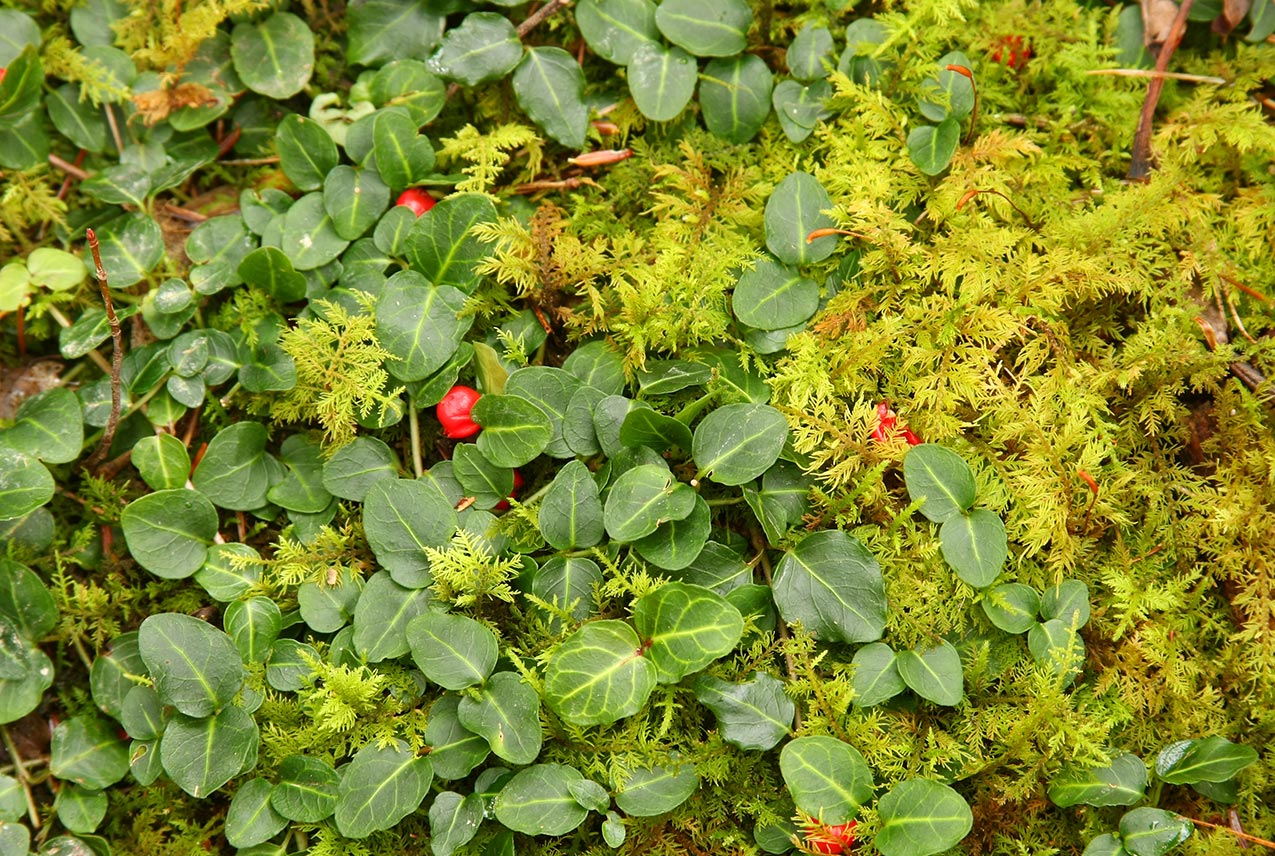Fertility Support
Traditional herbs for healthy reproductive function*
Mitchella repens
Mitchella is one of those plants that you would not really notice unless you were admiring the carpet of the forest in the Eastern parts of North America and happened to spot one of the bright red colored berries. The species name, repens, means "creeping" in Latin and this is exactly how Mitchella spreads itself across the ground. This is one of the many species in the Rubiaceae family of plants, a family with a strong history of use medicinally and of economic importance, Coffee being the most popular member also producing a berry that is dried and consumed as a beverage by millions of people. The Mitchella berries, not so much. The Iroquois prepared them as a relish, mashed and stored them as a dried cake, or dried and took on the trail as hunting food. They have very little flavor reminiscent of wintergreen if anything.

